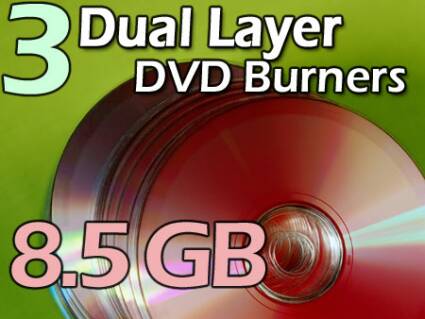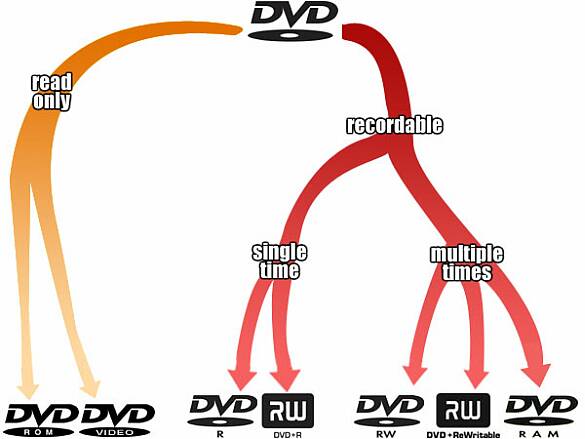Double-Layer DVD: Lite-On, LG and BenQ
Double-Layer Recordable DVD's Place In History
The DVD (Digital Versatile Disc) is worthy of the name. That is because it allows for storage of different data formats (video, computer data, music, etc.) and accepts various formats in order to adapt itself to the contents, while retaining its physical shape, that of a 4.5" (12 cm) platter.
Depending on the way you want to use a DVD, there are several subfamilies of this type of medium:
In addition to these subfamilies, the DVD format uses various standards to define the quantity of recordable data. There are four such standards.
| Standard | DVD5 | DVD9 | DVD10 | DVD18 |
|---|---|---|---|---|
| Sides | Single | Single | Double | Double |
| Layers | Single | Double | Single | Double |
| Capacity | 4.7 GB | 8.5 GB | 9.4 GB | 17 GB |
| Duration in video mode | 2 hours | 4 hours | 4 hours | 8 hours |
So far, standards other than DVD5 were reserved for DVD video and DVD-ROM, in other words, for pressed DVDs. All of that is now changing with the advent of DVD9 in the field of recordable DVDs.
The true revolution thus lies in the switch to double layer. For video DVD, this increases the capacity from 4.5 GB to 8.5 GB. That's pretty revolutionary, especially considering that when the first DVD burners came out more than two years ago, the manufacturers claimed that double-layer technology would be impossible to implement. The major research work was performed in the field of blank media. In fact, virtually nothing has changed as far as the burner hardware is concerned - the optical heads are the same. Only the firmware and part of the burner's electronic card has changed so that it can accept the double layer and additional error correction required by this technology.
Get Tom's Hardware's best news and in-depth reviews, straight to your inbox.
Current page: Double-Layer Recordable DVD's Place In History
Next Page Double-layer: The Latest Technology
